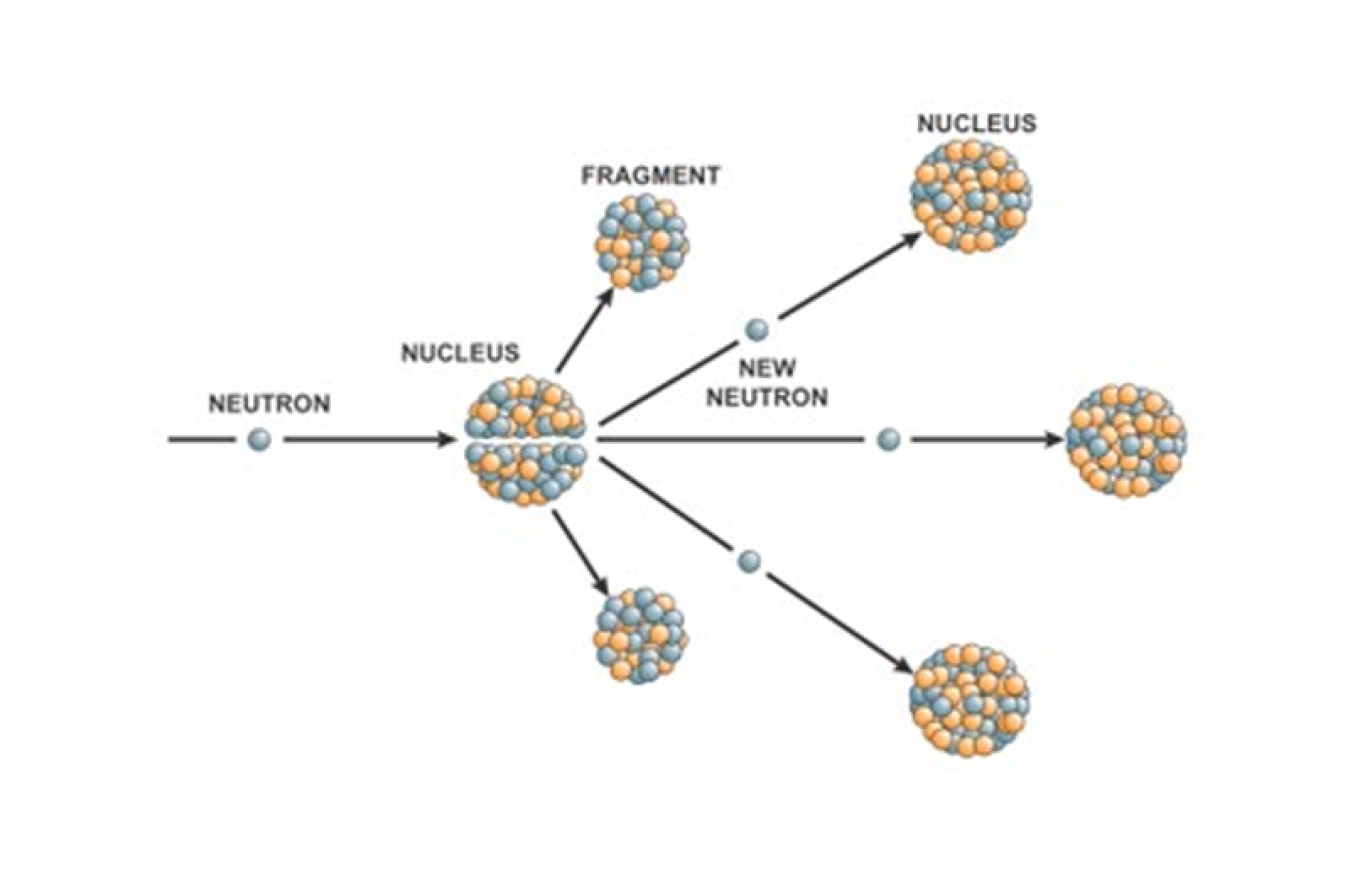
Nuclear fission is the process where the nucleus of an atom splits into two or more smaller nuclei and other particles. These particles can include neutrons, alpha particles (helium nuclei), beta particles (electrons), and gamma rays (which consist of particles of light, or photons). Fission was discovered in 1938 by Otto Hahn, Lise Meitner, and Fritz Strassmann by bombarding elements with neutrons.
Fission can start when a nucleus of a material is bombarded by particles such as neutrons and protons. This type of fission is called a nuclear reaction. Fission can release large amounts of heat and radiation. Today’s nuclear power plants use this heat to boil water and drive steam turbines to make electricity.
Scientists use the term fission cross-section to describe the likelihood that fission will occur. Fission cross-section depends on the energy of the incoming particle and the material of the nuclei that are being hit.
Fission can also be spontaneous and occur naturally. This is the process where radioactive elements decay into lighter elements. Some materials are naturally unstable and use radioactive decay to reach a more stable state. This is how some smoke detectors work in your home—they use the electrical current made possible by particles from radioactive decay. If particles of smoke disrupt the current, the alarm goes off.
DOE Office of Science: Contributions to Nuclear Fission Research
The Department of Energy (DOE) Office of Science, Office of Nuclear Physics supports research to understand all forms of nuclear matter. Fission processes are used by researchers in basic science, medicine, non-proliferation/defense, and energy to advance our knowledge and technology. These experiments use equipment at DOE Office of Science user facilities such as the Facility for Rare Isotope Beams at Michigan State University and the Argonne Tandem Linac Accelerator System at Argonne National Laboratory. Experiments collect new data on fission processes and examine properties on new materials. Theorists use new and updated data to improve predictions for modeling and simulation.
Fission Facts
- The National Nuclear Data Center at Brookhaven National Laboratory maintains databases for nuclear properties for the entire periodic table.
- Nuclear reactors can use the fission of uranium for fuel. A uranium fuel pellet the size of an egg has as much energy as 88 tons of coal.
- Learn more about how fission makes smoke detectors work.
Resources and Related Terms
- DOE Office of Science Nuclear Physics program
- A New Era of Discovery – The 2023 Long Range Plan for Nuclear Science Report
- Argonne Tandem Linac Accelerator System at Argonne National Laboratory
- Facility for Rare Isotope Beams at Michigan State University
- National Nuclear Data Center at Brookhaven National Laboratory
Scientific terms can be confusing. DOE Explains offers straightforward explanations of key words and concepts in fundamental science. It also describes how these concepts apply to the work that the Department of Energy’s Office of Science conducts as it helps the United States excel in research across the scientific spectrum.

